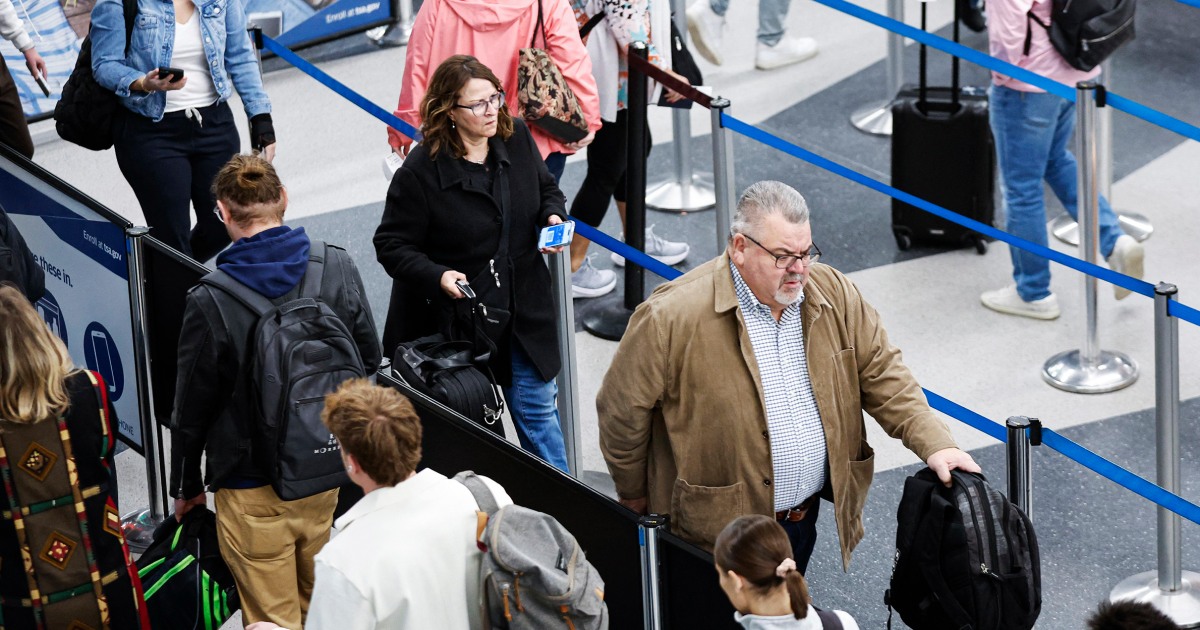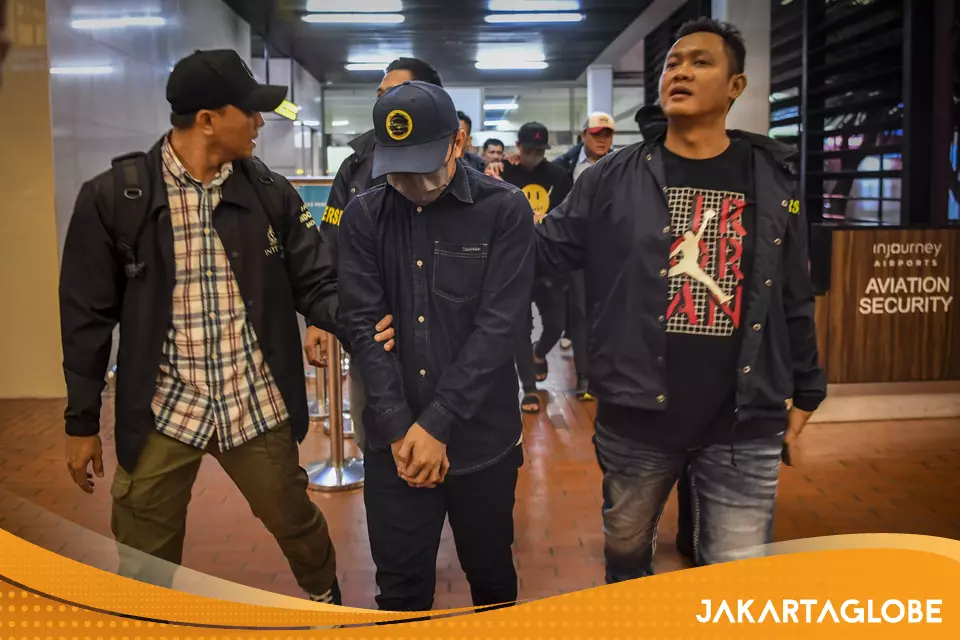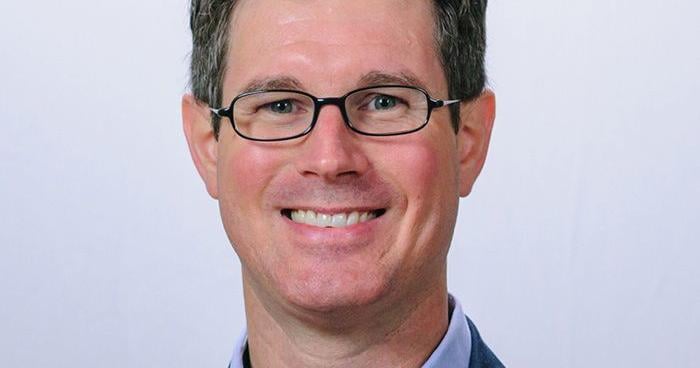Bussiness
America’s way of measuring poverty is stuck in the 1960s. Here’s how we can fix it.
Jason Hopkins, 43, has never made over $35,000 a year.
“If I made $45,000 a year, I would feel wealthy,” the Illinois-based custodian told Business Insider.
Hopkins said he’s lived paycheck to paycheck for the last decade. He’s unable to save money from his income and doesn’t go out; he buys a new shirt once a year. Existing like that is “draining,” he said.
But he makes too much money for most forms of social assistance. This is a common predicament among Americans who are ALICE — asset-limited, income-constrained, and employed. Many forms of help are tied to the federal poverty line, which is calculated using a formula that has largely not been updated since the 1960s.
Jason Hopkins
“The way we measure poverty is incredibly outdated,” said Beth Jarosz, senior program director at the Population Reference Bureau, a nonprofit organization that conducts demographic analyses.
BI has heard stories from parents forced to choose between putting food on the table and supporting their children’s education, older adults worried they will never be able to retire, childfree couples unable to access social services, and individuals concerned they will never be able to pay down debt.
These households could use more access to social assistance — but the US’ poverty threshold is leaving them behind. If America modernized its way of measuring economic needs, millions of low-income families could better make ends meet. The real question is whether the US ever will.
The poverty line is calculated in an outdated way
The current federal poverty line for the 48 contiguous states and Washington, DC, is $15,060 a year for one person, $20,440 for a family of two, and $31,200 for a family of four. This does not vary by location or cost of living, but it’s adjusted for inflation each year.
“Straight up, it is too low. It is not a sufficient way to measure how current families are doing,” Kyle Ross, a policy analyst for inclusive economy at the Center for American Progress, told BI.
Per the most recent Census data, the official poverty rate in 2022 was 11.5%, or about 37.9 million Americans. In 2022, 42% of Americans were below the ALICE threshold, the amount households need to cover their essential costs, according to research organization United For ALICE.
Mollie Orshansky, a government worker, originally estimated the federal poverty line formula in the 1960s using USDA data, which showed people often spent around a third of their income on food.
But that doesn’t account for how Americans actually live. Americans now spend just around 13% of their income on groceries, as food prices have fallen relative to incomes and housing costs have risen disproportionately. According to the Bureau of Labor Statistics, people spent 33.3% of their income on housing last year.
“With the way that costs have changed, the poverty measure that’s just based on how much you’re spending on groceries really does not reflect what people are paying for their expenses today,” Jarosz said.
Over 30 government programs use the Department of Health and Human Services poverty guidelines — or higher percentages based on the federal poverty line — to determine eligibility criteria.
For instance, the Supplemental Nutrition Assistance Program (SNAP) is capped at 130% of the federal poverty line — which would be $2,694 in gross monthly income for a family of three — while the Special Supplemental Nutrition Program for Women, Infants, and Children (WIC) is 185% — $47,767 a year for a family of three. Head Start, the National School Lunch Program, and parts of Medicare and Medicaid are among other programs relying on federal poverty line eligibility.
Notably, some outlier programs like Supplemental Security Income, the Earned Income Tax Credit, and Section 8 low-income housing assistance do not rely on the federal poverty line.
“So much of federal policy, state policy is focused around the poverty level,” Stephanie Hoopes, national director at United For ALICE, told BI.
That’s all leading to an ever-widening gap of Americans who are technically in poverty but still aren’t getting by.
“These thresholds have a cliff problem where they often become a trap where you have someone who is at a very low-income level and work because oftentimes programs have work requirements,” Jarosz said. “Maybe over the holidays, they get an additional shift that they’ve picked up, and that bumps their income up just enough that they lose their Medicaid coverage that month.”
That financial cliff has left people like Melinda Binkley, 56, “less than $100” away from receiving SNAP or rental assistance but struggling to keep a roof over her family’s head in Stillwater, Minnesota. Ryan Arbuckle, 36, also doesn’t qualify for government help on his IT job salary. He’s a single father to five children near St. Louis and can barely afford groceries and utility bills.
Oleg Parubin, a 45-year-old security guard in Manhattan, makes $45,000 a year but struggles to afford insulin for his Type 1 diabetes and worries about eviction. Once he started making more at his job, he became ineligible for various benefits such as SNAP or reduced-fare transportation, which he estimates amounted to over $10,000 a year in lost benefits.
“I wasn’t able to find an answer to how people can make it today, ” Parubin said. “I just decided it is a faulty system, something is broken and doesn’t work properly. But I still don’t know what can I do.”
To survive, these Americans who fall outside financial safety nets have resorted to selling plasma for extra income, skipping meals, and risking the loss of their electricity or water supply because of delayed bill payments.
“It really creates a lot of additional stress and burden on families in a case where having consistent benefits available to everybody would be much more efficient for society as a whole,” Jarosz said.
There are better ways to calculate poverty
Though many experts agree the poverty line is outdated, it’s still used to determine cutoffs for a slew of federal assistance programs, leaving people like Melissa Hedden behind.
Hedden, 41, has spent most of this year moving between Airbnbs and hotels in southeastern North Carolina with her partner and 11-year-old daughter. Her family’s landlord raised the rent and evicted them last fall, and she can’t afford the fees necessary to lease a new apartment. Still, her $3,300 monthly household income is too high to qualify for a rental voucher.
“I’m not homeless enough to get certain help because I have a roof over my head,” she previously told BI. “But I’m too homeless to get a job because I don’t know where I’m going to live in three weeks. What do you do?”
Courtesy of Melissa Hedden
Much of the resistance to changing the federal poverty line could stem from the government’s desire not to inflate the number of people in poverty overnight.
“No one really wants to be the politician that is behind an increase in poverty,” Ross said, adding: “Even if it may be a more accurate representation of how Americans are really doing financially, it looks pretty concerning on paper.”
Expanding eligibility would also mean that, intuitively, more people would receive assistance — and that could cost a lot more money.
“It can definitely be a costly measure to do that,” Ross said. “I personally think that would be worth it; already, these programs are not meeting the needs of families as they are.”
Other barriers to updating the poverty line are political. Congress would need to pass legislation in order to officially change the way the US measures economic need, or the Biden administration would have to step in, which would both be unlikely in such a polarized political environment.
Bills that expand social services and tax credits are also expensive and historically difficult to pass — most recently, with the expanded child tax credit being stalled in the Senate, and plans to expand Medicaid being blocked in multiple states this year.
Experts differ on how to fix poverty measures, but there is already progress on solutions
While researchers differ on how the poverty line should be tweaked, many agree it needs an overhaul.
“We know the poverty level is too low to reflect the true number of people who are in need,” Jarosz said. “Is there really a need to have a threshold? Is there really a need to have a cap?”
And Ross said that even if thresholds don’t change, programs could still work to eliminate many barriers to entry, like burdensome application processes — making them more accessible to people who do qualify.
Rep. Kevin Mullin, a Democrat from California, has introduced legislation — called the Poverty Line Act— that would modernize the federal poverty line, taking into account actual costs of goods and how prices differ across regions.
“The current poverty line is woefully out of touch with the realities that Americans face today,” Mullin told BI in a statement, noting that the line doesn’t account for how costs vary across the country — especially for key essentials like childcare and home rentals.
“Unfortunately, many working families make too little to afford their basic needs, yet because the federal poverty line is so low, they are not eligible for safety net benefits,” Mullin added.
The federal poverty line probably won’t be changed for some time, Jarosz said, given how many benefits programs rely on it. Still, there is precedent for programs providing more widespread boosts or sidestepping stringent eligibility and spending requirements.
The universal or guaranteed basic income model, which typically gives participants between $100 and $1,000 a month with no strings attached, has been tried over 100 times since 2019 and has helped thousands of households find housing and food security.
Unlike traditional social services like SNAP or Medicaid, participants can spend the money wherever they need it most. Basic income gives households an income floor, said Michael Tubbs, the founder and chair of Mayors for a Guaranteed Income and former mayor of Stockon, California, which launched the recent wave of GBI pilots.
“The top benefit is the choice and the ability to have agency and to figure out how to use your money because we know that no one’s smart enough to think for everyone,” Tubbs said.
Hopkins — the ALICE in Illinois — has benefited from government assistance before. When the pandemic hit, he received enhanced unemployment benefits and a stimulus check — two measures that, unlike many other forms of social assistance, were widely available and not constrained by the federal poverty line.
For him, that unprecedented support meant he could buy a house with his fiancé and live alongside two other roommates.
“The only way I could afford the down payment on this house is from the expanded unemployment during the pandemic and the stimulus,” he said. “If we didn’t have this house, I don’t know how we would live.”
Do you make above the poverty line but not enough to meet your daily needs? Reach out to these reporters at jkaplan@businessinsider.com, nsheidlower@businessinsider.com, and allisonkelly@businessinsider.com.









